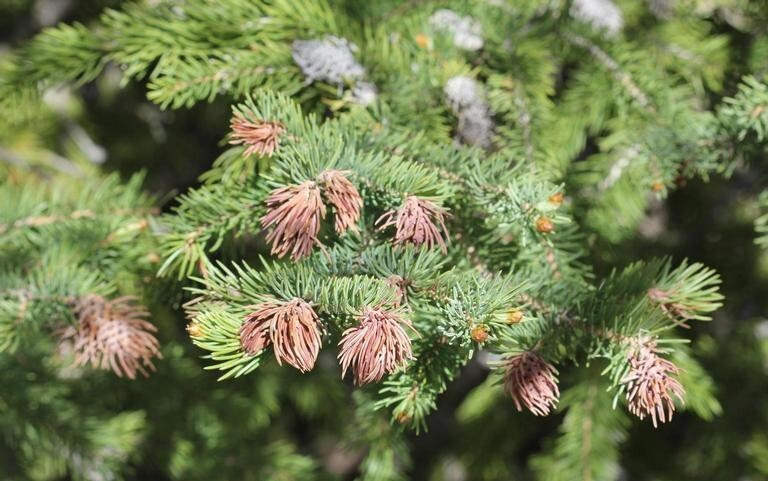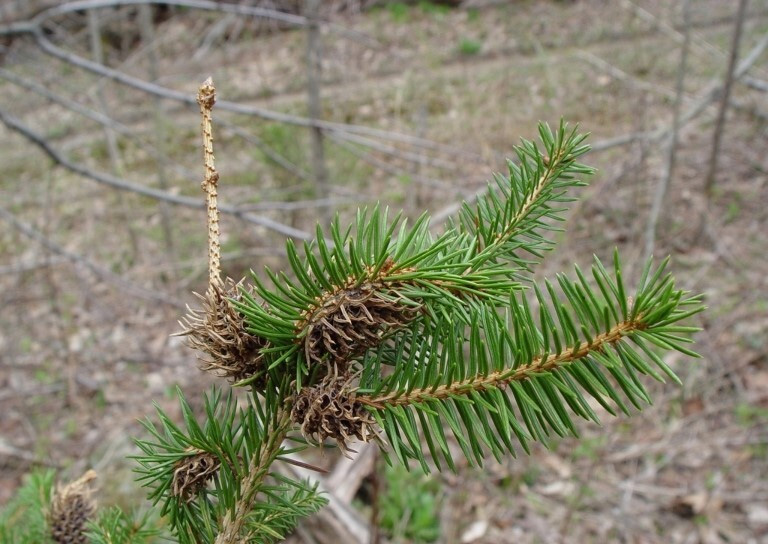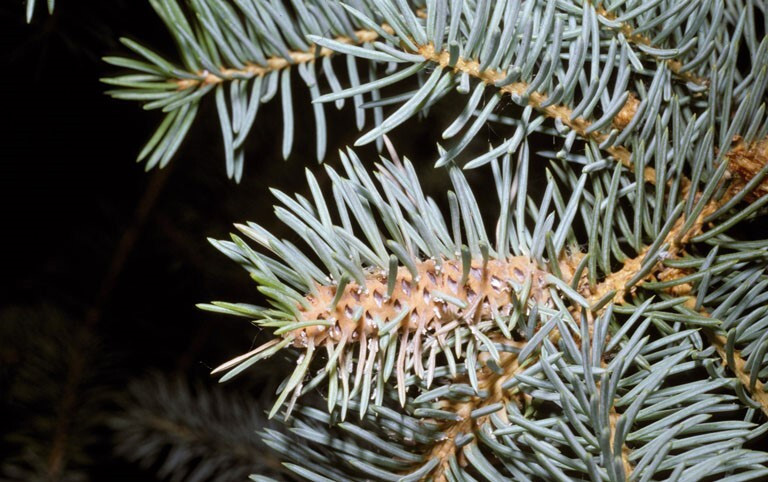Cooley Spruce Gall Adelgid (Adelges cooleyi)

Figure 1. Galls on the terminals of branches. Photo by W. Cranshaw, CSU, Bugwood.
Host
Spruce and Douglas-fir trees.

Figure 2. Up-close photo of galls on terminals. Photo by PA DCNR Forestry, Bugwood. Larger image (157KB).

Figure 3. Developing galls. Photo by W. Ciesla, Bugwood. Larger image (162KB).
Damage and Symptoms
Adelgids resemble aphids and form cone-like galls on the new growth of spruce trees. At the end of the summer, the galls resemble miniature pine cones.
Life Cycle
The insects use both Douglas-fir and spruce as hosts. On Douglas-fir, the adelgids overwinter as nymphs and mature in May. Some will disperse to spruce trees. On the spruce, winged adelgids lay eggs, which hatch in the spring around bud break. The nymphs move to the base of the needles to begin feeding. Gall formation occurs (on spruce only), and the adelgids will continue to feed and develop within the galls.
Management
The galls on spruce rarely harm the tree, and most trees have a high resistance to them. The damage on both the spruce and Douglas-fir is minimal. Once the galls have turned brown, the insects have already left the galls; removing them will not remove the insects or reduce future populations of the insects. For chemical control, a contact insecticide can be applied prior to gall formation or a systemic insecticide can be applied to the spruce tree in early spring.
Further Information
To learn more about the topics discussed on this page, contact the Schutter Diagnostic Lab. If you suspect an infestation on your property, contact your local extension agent, the Schutter Diagnostic Lab at Montana State University, or the Montana Department of Agriculture.
This fact sheet is also available as a printable PDF (470KB).
Disclaimer: These recommendations are provided only as a guide. It is always the pesticide applicator’s responsibility, by law, to read and follow all current label directions for the specific pesticide being used. The authors and Montana State University assume no liability resulting from the use of these recommendations. The Montana State University Extension Service is an ADA/ EO/AA/Veteran’s Preference Employer and Provider of Educational Outreach.
